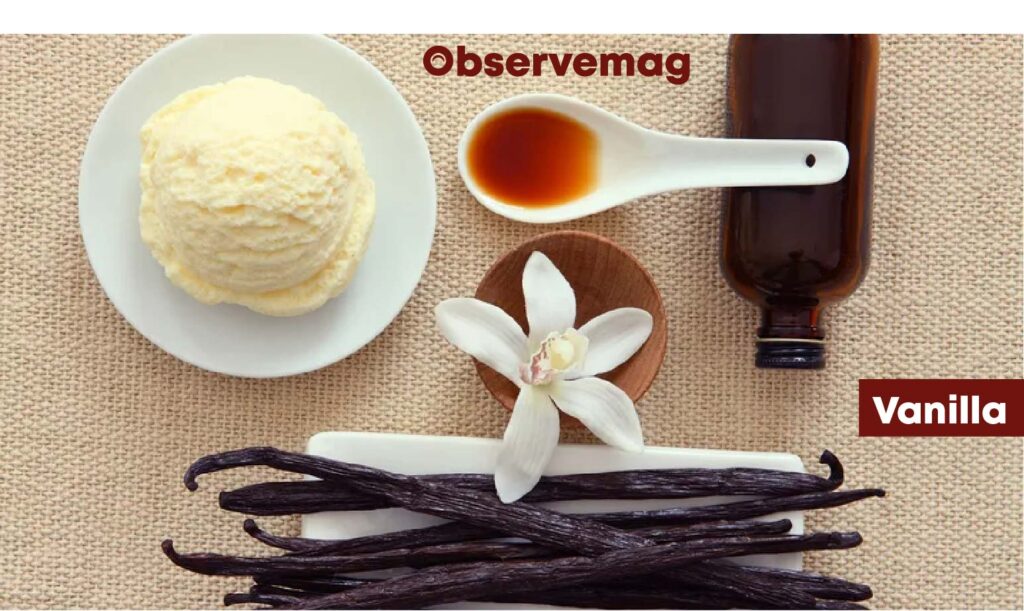Introduction:
Vanilla, often considered the queen of spices, captivates with its complex flavor and aromatic charm. In this comprehensive guide, we delve into everything vanilla—from its fascinating history and various types to its indispensable role in culinary creations. Join us as we explore how this exquisite spice can elevate your cooking and baking, making each dish a memorable experience.
History of Vanilla:
Vanilla’s journey begins in Mexico, where the Totonac people were the first to cultivate the vanilla orchid. The Aztecs later acquired vanilla through conquest, using it to flavor their chocolate drink, xocolātl. It wasn’t until the Spanish conquest of the Aztec Empire that vanilla’s began its voyage across the globe, transforming cuisines and becoming a staple in kitchens worldwide.
Types of Vanilla:
When it comes to vanilla, diversity abounds. The most prized varieties include Bourbon vanilla, sourced from Madagascar, offering a rich and creamy flavor, and Mexican vanilla, known for its smooth, spicy notes. Each type of vanilla’s bean brings its unique profile to dishes, allowing chefs and home cooks to experiment and find their preferred flavor.
Culinary Uses of Vanilla
Vanilla, a key ingredient in the culinary world, significantly transforms desserts and beverages with its warm, rich aroma and flavor. Its versatility allows it to enhance the sweetness in cakes, cookies, and pastries, while also offering a subtle complexity to savory dishes. In beverages, vanilla’s adds depth to coffee, tea, and cocktails, elevating their taste profiles. Whether used as an extract, bean, or paste, vanilla’s distinctive taste complements a wide range of ingredients, making it indispensable in both traditional recipes and innovative culinary creations. This spice’s ability to balance flavors and add a gourmet touch is why vanilla’s remains a favorite among chefs and home cooks alike.
How to Choose and Store Vanilla
When selecting vanilla beans, look for plump, glossy pods that are soft and flexible, indicating freshness. A strong, sweet aroma is a sign of quality. For vanilla extract, choose products labeled as “pure” to ensure it’s made from real vanilla beans without synthetic flavors. Store vanilla’s beans in an airtight container in a cool, dark place to preserve their flavor. Extracts should be kept tightly sealed and away from direct light to maintain their potency over time.
DIY Vanilla Extract Recipe
To make your own vanilla extract, start by splitting 5 vanilla’s beans lengthwise to expose the seeds. Place the beans in a sealable jar and cover them with 8 ounces of vodka, ensuring the beans are completely submerged. Seal the jar tightly and store it in a cool, dark place. Shake the jar gently once a week. Allow the mixture to infuse for at least 8 weeks; the longer it sits, the richer the flavor. Strain the extract into a clean bottle for use.
FAQs About Vanilla:
- What’s the difference between pure vanilla’s extract and imitation vanilla?
- Pure vanilla extract is made from real vanilla’s beans, offering a complex flavor profile that imitation vanilla’s, which is synthetically produced, cannot match.
- How long can I store vanilla beans?
- Properly stored in an airtight container away from light and heat, vanilla’s beans can last up to two years, retaining their aroma and flavor.
- Can I grow vanilla’s at home?
- Growing vanilla at home is possible but challenging, as the vanilla’s orchid requires specific conditions to thrive and produce beans.
Conclusion:
Vanilla’s journey from bean to kitchen is a testament to its enduring appeal and versatility in cooking and baking. By understanding the types of vanilla, how to use and store them, and even how to make your own vanilla’s extract, you’re well on your way to infusing your dishes with the exquisite flavor of this timeless spice. Embrace the allure of vanilla’s in your culinary adventures, and let its sweet, comforting aroma fill your home.

